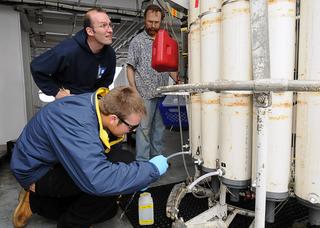Ocean Shows Resilience in Wake of Fukushima Disaster

Thursday, April 05 2012
When the Fukushima nuclear power plant suffered a blowout a year ago, radioactive contamination of the Pacific Ocean was a major concern. People wanted to be sure that the marine ecosystem remained healthy and that the seafood they ate was safe.
To confirm that was the case, an international team of researchers took water samples as far as 400 miles out from the meltdown and tested them for radioactive isotopes. They published their research this month in the Proceedings of the National Academy of Sciences, and what they saw was mostly what they expected: Areas near Japan and in the line of strong currents experienced higher levels of radiation than usual, but the effect on marine life was minimal beyond Japan’s coast line.
"We’re not seeing the strange Godzillas or three-headed fish. The effects are going to be very subtle," says Ken Buesseler, a marine chemist at the Woods Hole Oceanographic Institution and the lead author of the study.
He adds that the Fukushima meltdown didn’t affect the health of most commercial fisheries, including stocks in Alaska waters, because the radioactive materials get so diluted.
"Fortunately, in some ways, this material in the ocean mixes quickly away and gets to lower concentrations. Certainly what we saw was many times – thousands of times – lower than what we might expect with regard to direct threats to marine biota or humans," says Buesseler.
While the water that the team sampled was safe enough to sustain marine life and even drink, researchers say there might still be some “hotspots” where radioactive isotopes have accumulated that could harm nearby marine life.
The research cruise was conducted in June of last year, and it lasted more than two weeks.




frank kelty on Friday, April 06 2012:
Nice article good work Alex